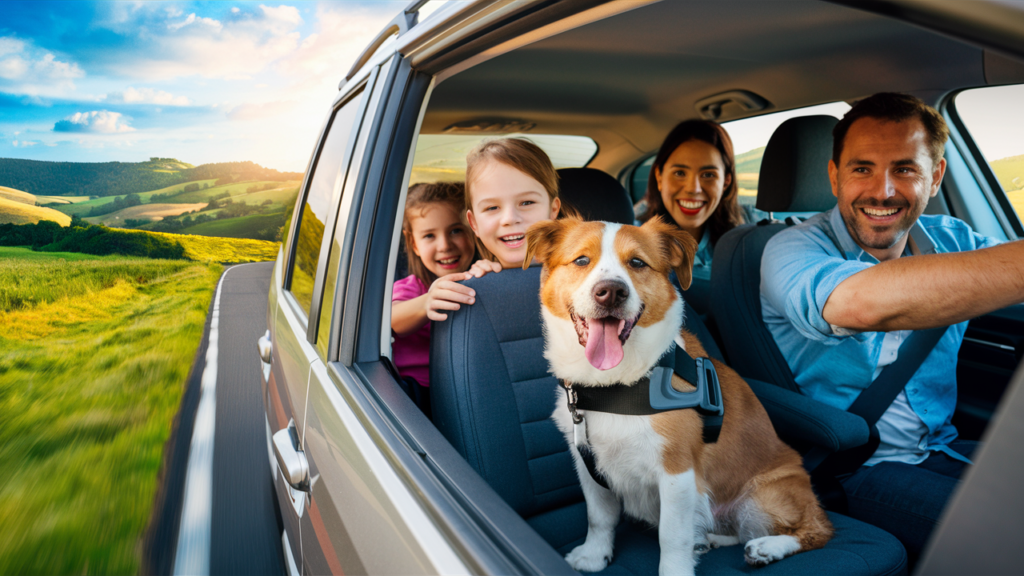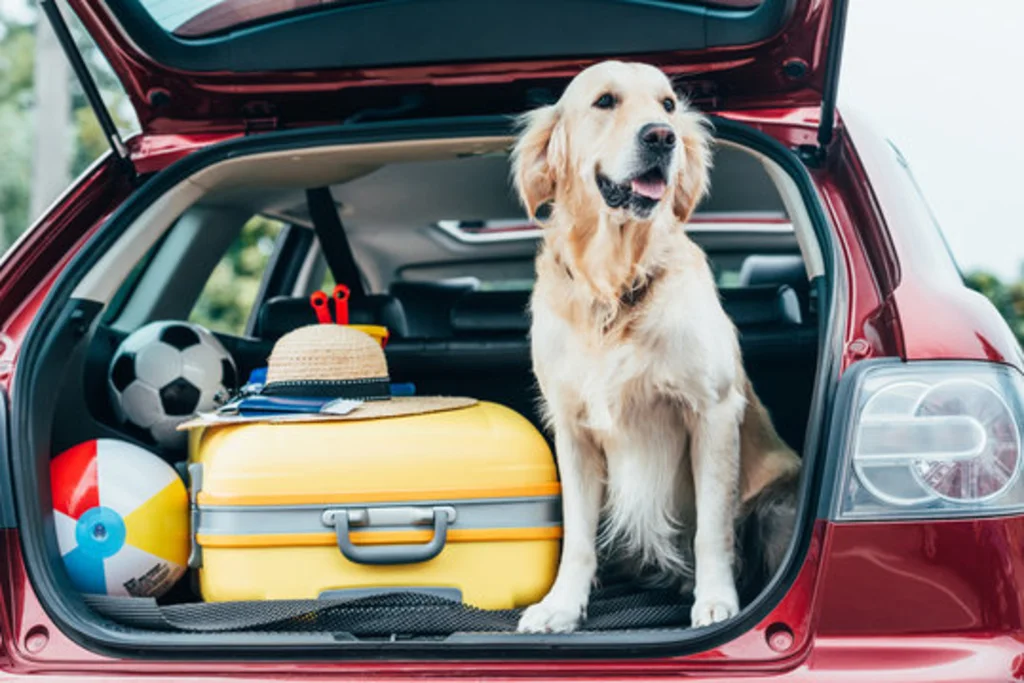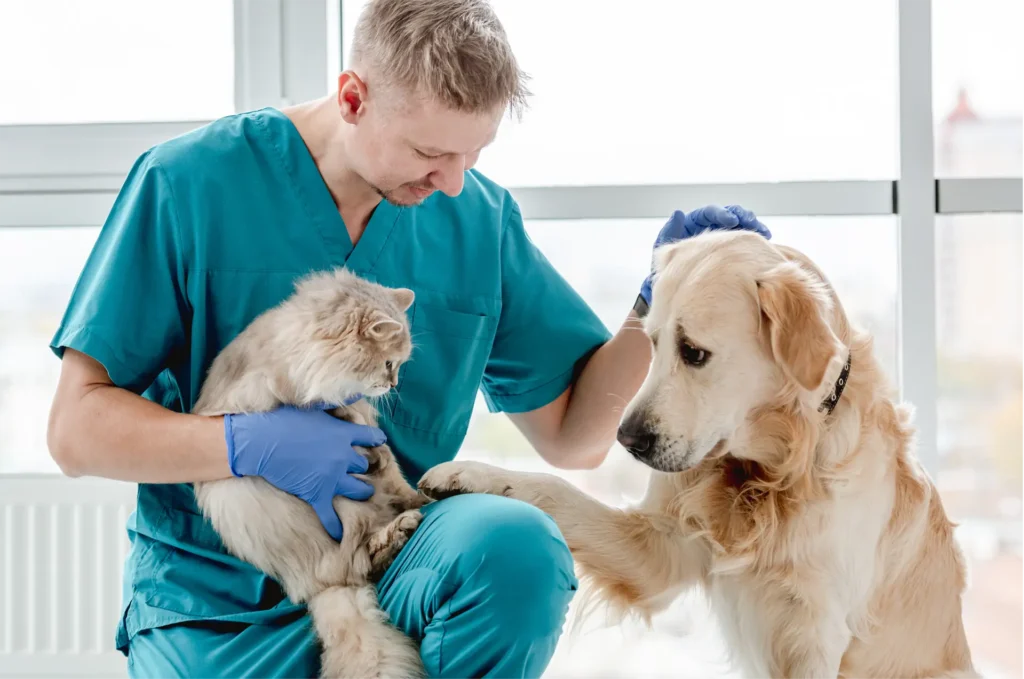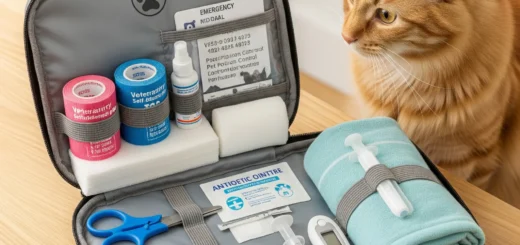How to Travel with Your Pet Safely: Happy Trips

Travel with your pet safely and cherish the memories you make together. Bringing your furry companion along on the journey can be a rewarding experience, but it requires thoughtful planning to ensure their comfort and safety. This comprehensive guide will equip you with everything you need to know to care for your pet during travel. This will make the trip enjoyable for everyone involved. From health and happiness tips to essential preparations and transportation methods, we’ve got you covered.
It is important to plan ahead before packing. Do you have a specific kind of trip in mind? How long was the trip? Did you go on a short road trip or did you fly long-distance? What is the distance between your home and your destination? Depending on the answers to these questions, you’ll know what to pack and how to prepare. There is no one-size-fits-all solution for traveling with a pet – it depends upon the mode of transportation, distance, and the pet’s specific needs. The first step to a successful journey is understanding your pet’s personality. Does your dog experience anxiety while in transit, or does your cat adjust easily to changing environments? Identifying your pet’s temperament allows you to anticipate their needs and reduce stress during the trip. For pets prone to anxiety, a veterinarian may recommend anti-anxiety medication or calming supplements. Taking a proactive approach is essential to Travel with Your Pet Safely and ensuring their well-being throughout the journey.
Next, research your travel destination. Is it possible for pets to stay at the accommodation you have chosen? The majority of hotels and vacation rentals now allow pets, but don’t forget to double-check the pet policies, including any size or breed restrictions. Pet-friendly places may even offer on-site dog parks, walking trails, or pet-sitting services. Informing yourself ahead of time will help you and your pet have a smooth and comfortable stay. Decide which activities at your destination you’d like to enjoy before planning your itinerary, and whether you’ll bring a pet. Verify that any hiking trails or outdoor spots you plan to visit are pet-friendly and that your pet is physically able to participate. It is a great idea to allow your pet to explore urban parks and open spaces safely while getting exercise. It is imperative to plan your pet’s travel in this way to help ensure a safe and enjoyable trip.
Consideration should also be given to the time of year when you are traveling. Animals suffer from heatstroke or hypothermia when they are exposed to extreme temperatures. During harsh weather conditions, pets may be more vulnerable, so make extra efforts to keep them comfortable. During hot weather, cool vests could be worn, or insulated carriers might be used to protect your pet from the cold.
Essential Preparations: How to Travel with Your Pet Safely
The next step is to prepare your trip in detail as soon as you’ve decided on your destination and dates. Taking care of your pet while traveling can relieve a lot of stress.
Visiting the Vet is a Must: Visit your veterinarian before any major trip, in particular if you are crossing state borders or borders between countries. It is important that your pet is healthy enough to travel and that all necessary vaccinations have been administered. The airline can also provide a health certificate, which is required by certain countries and airlines. Any potential travel sickness or anxiety your pet is experiencing should be discussed with your veterinarian. It is possible for your veterinarian to recommend motion sickness medications as well as calming aids for those suffering from motion sickness. It is critical that your pet has a pre-trip check-up in order to ensure its safety.
2. Identification is Key: Make sure your pet wears the appropriate collar and identification tag, including your phone number. The microchipping of your pets might be a great idea if they are not yet ready. It is possible to reunite lost pets with their owners significantly more easily by using a microchip, which is a permanent form of identification. Maintain your contact information and register your microchip with a reputable database. Double-check all the details before taking your pet on a trip.
3. Picking the right pet carrier : Does your pet have a comfortable and safe place to sleep when traveling? It should be large enough to allow your pet to stand up, turn around, and lie down comfortably. It is essential to verify in advance with your carrier whether they meet airline requirements. Best safety is provided by pets traveling in crates or seatbelt harnesses that have been crash-tested. By introducing your pet gradually to the carrier before the trip, you will create an association of comfort instead of fear. Preparing your pet in this way is crucial to ensuring its safety while traveling.
4. Pack a Pet Travel Kit: Create a separate travel kit for your pet, just like for your essentials. It’s best to pack enough of their regular food for the entire trip to avoid upset stomachs caused by sudden diet changes. Bringing bottled water when traveling is a good idea, especially if you are concerned about the quality of the water at your destination. The destinations of bowls. The lightweight and convenient nature of collapsible travel bowls makes them a useful item. Weight is not an issue with the medications. There are clear instructions for all medications required. Instructions on how to use leashes. Secure leash and collar: Always carry them with you. Putting a garbage collar on. There is no doubt that dog owners need waste bags. They are my favorite dog owners. It is important for a child to have toys and blankets to help them feel less anxious. There is anxiety associated with grooming. Accessorize your grooming kit with brushes, wipes, and other grooming supplies. Emergency medical care. It is recommended that you keep a first-aid kit equipped with bandages, antiseptic wipes, tweezers, and any other items recommended by your veterinarian. It is imperative to prepare this kit in advance so your pet can travel safely.
5. Take them on a practice run: If your pet isn’t accustomed to riding in a car or carrier, take them on short practice runs before embarking on a extended trip. Gradually increase the duration of these trips. This acclimates travelers to the sounds and motions, reducing their stress on the actual trip. During these practice runs, treats are given as reinforcement and praise is given to help build a positive relationship with travel. It is possible to travel safely with your pet if you follow this strategy.

The Safest Way to Travel with Your Pet: Transportation Methods
It is important to consider transport modes when traveling with your pet. Considerations and guidelines are unique to each option. It is essential to acknowledge this.
Traveling with a pet in a car is safe when you follow these tips
It is the most flexible and controllable mode of transportation for pet owners, which makes it the most popular choice. There is no substitute for safety.
-
Secure Your Pet: Never leave your pet unattended in the car. It can be dangerous to drive with an unsecured pet as it can distract the driver and become a projectile in the event of a sudden stop or accident. Pets should be transported in a crash-tested crate or harness designed specifically for them. If possible, place the crates in the back seat of an SUV, preferably secured with seatbelts, or in the cargo area if properly mounted.
-
Regular Breaks: Take regular potty breaks, give your pet water, and give them a chance to stretch their legs. Pets should never be left unattended in parked cars. It is possible to suffer from heatstroke or hypothermia inside a vehicle when the temperature rises or falls rapidly.
-
Ventilation: If it’s hot outside, make sure the car has good air circulation. Check the airflow in your pet’s crate to ensure that it is not blocked.
-
Avoid eating before traveling: Eating before traveling can increase motion sickness. Make sure your pet is fed a light meal a few hours before your departure.
-
Calming Aids: Dogs that become anxious in the car may benefit from calming sprays, pheromone diffusers, or anti-anxiety medications prescribed by their veterinarians.
-
Entertainment: Bring chew toys or puzzle toys to keep your pet entertained while you drive. The result is that they do not become bored or restless. It’s really important to follow these tips when you’re traveling with your pet in the car.
Pet Travel: How to Travel Safely by Air
The preparation and planning required when traveling by air with pets is more extensive. Airlines have strict policies regarding pet transportation.
-
Ensure you are familiar with your airline’s policies: There may be differences between airlines as to pet sizes and breed restrictions, as well as the size and shape of carriers, as well as whether pets can travel in the cabin or as cargo. Several airlines do not allow brachycephalic breeds (short-nosed dogs) because they suffer from respiratory issues. It is imperative to contact your chosen airline well in advance to understand their specific requirements. If you plan to travel by plane with your pet, you need to do this in order to ensure a safe experience.
-
In-cabin versus cargo: Most airlines will allow small pets to fly in the cabin if they are securely enclosed in approved carriers. Oversized or larger pets cannot be accommodated in the cabin, but the cargo hold is the only option. Pets typically experience stress when transported in cargo, even when airlines take precautions. It is important for pet owners with large animals to consider alternatives.
-
Certificate of Health: Airlines generally require a health certificate from a certified veterinarian within a specific timeframe (usually 10 days). This certificate confirms your pet’s health is sufficient to travel by air.
-
Transport Acclimatization: Acclimate your pet to their crate 6 weeks before the flight if they are travelling in cargo. It is possible to make the experience more enjoyable with treats and toys. During the journey, this helps reduce stress.
-
Water and food: Avoid feeding your pet a large meal before flying. The crate should be filled with ice cubes or water to prevent spills.
-
Pre-arrival Procedures : Ensure compliance with local regulations of your destination country or state before arriving. Depending on the situation, some may require special tests, quarantines, or other paperwork.
-
Avoid extreme temperatures: Airlines are required to restrict travel for pets during extremely hot or cold weather in order to protect them. Keeping these guidelines in mind is crucial to a safe and smooth flight.
How to Travel with Your Pet Safely by train or bus
Traveling by train or bus with pets is becoming more common, but options vary widely depending on the region and the specific company.
- Check Policies: Before booking, thoroughly research the train or bus company’s pet policies to ensure you are aware of any restrictions or requirements. Many restrict pet size and type and require pets to be in carriers. Some only allow service animals.
- Reservations: If pets are allowed, you should make special reservations for them or purchase an additional ticket.
- Carrier Requirements: Ensure your pet’s carrier meets company ventilation requirements. It should be comfortable for your pet on the entire journey.
- Onboard Behavior: Your pet must remain in their carrier throughout the trip. Please make sure they are well-behaved and quiet to avoid disturbing other passengers.
- Potty Breaks: Long train journeys might have scheduled stops where you can take your pet for a quick potty break. Inquire about these beforehand. These steps are essential for traveling with your pet safely on public transport.

Pet Travel Safety: Tips for Traveling with Your Pet
It is possible to encounter challenges even when you have prepared thoroughly. Traveling with your pet can sometimes be challenging, but here’s how to handle any issues you may encounter.
-
Stay calm: It is possible for your pet to detect stress. If things don’t work out as planned, remain calm and reassuring.
-
Hydration: Provide water frequently, especially during long journeys. It is more likely to suffer from dehydration in hot weather, especially if it is humid.
-
Feeding: Stick to your pet’s solar feeding schedule as much as possible, but offer smaller meals to prevent upset stomachs. Avoid eating large meals before or during motion.
-
Exercise: During car trips, take short walks and play with children during rest stops. Ensure your pet gets adequate exercise before heading to the airport if you are flying.
-
Monitor Your Pet for Stress: Look for signs of stress in your pet, such as excessive panting, drooling, whining, shaking, or hiding. If your pet shows extreme distress, comfort them. If necessary, pull over safely or consult airline staff if in transit.
-
Never Leave Pets Unattended: This cannot be stressed enough. Leaving a pet alone in a vehicle, especially in extreme temperatures, is incredibly dangerous and can be fatal. THIS IS A CRITICAL ASPECT OF TRADING WITH YOUR PET SAFELY.
-
Maintain a routine: Try to maintain as much of your routine as possible during the trip. This includes feeding times, walks, and playtime. Predictability reduces anxiety.
-
Positive Reinforcement: Reward exemplary behavior with treats and praise. This helps your pet associate travel with positive experiences.
-
Emergency Contacts: Keep a list of emergency veterinary clinics along your route or at your destination. Knowing where to get help in an emergency is vital to traveling safely with your pet.
At Your Destination: How to Travel with Your Pet Safely
You’ve! But the journey isn’t over for your pet. Settling in an unfamiliar environment requires care and attention.
-
Designate a Safe Space: When traveling with your pet safely, it’s essential to create a comfortable and familiar environment for them upon arrival at your destination. This could be their crate, a designated bed, or even a corner with their favorite blanket and toys. Creating this secure space helps provide them with a sense of security in an unfamiliar place, making the transition smoother and less stressful. Ensuring that your pet feels comfortable and safe is a key part of traveling with your pet safely.
-
Explore Gradually: When you travel with your pet safely, allow them to explore their surroundings gradually. Keep them on a leash, especially in unfamiliar areas, to ensure their safety and comfort.
-
Maintain a Routine: To travel with your pet safely, stick to their usual feeding and exercise routines. Consistency helps them adjust more easily to new surroundings.
-
Pet-Proof the Area: To travel with your pet safely, always survey the area before letting them roam free. Look for hazards like open windows, toxic plants, small objects they might swallow, or unsecured chemicals. This precaution ensures their safety and helps create a secure environment as you travel with your pet safely.
-
Local Pet Resources: Identify local veterinary clinics, pet supply stores, and pet-friendly parks in your area. This information is invaluable when you need it.
-
Respect Local Laws: Be aware of and respect local leash laws, waste disposal regulations, and other pet-related ordinances.
-
Supervise Outdoor Time: When you travel with your pet safely, especially in areas without fences, always supervise your pet outdoors. Keeping a close eye on them ensures their safety and prevents any potential dangers while exploring new environments.
-
Socialization: If you plan to visit public places, ensure your pet is well-socialized and comfortable around new people and other animals. By taking these steps, you will reinforce how to travel with your pet safely, even after you reach your destination.
Pet Travel Challenges and Solutions: How to Make Your Trip Safe
Motion Sickness: Travel with your pet safely by addressing motion sickness, which can manifest through drooling, restlessness, vomiting, or lethargy. Consult your veterinarian about anti-nausea medication to ensure your pet’s comfort when traveling safely. Eat a light meal several hours before traveling and ensure the car is well-ventilated to help your pet travel safely.
Anxiety/Stress: Travel with your pet safely by reducing anxiety or stress. Signs like whining, panting, destructive behavior, and hiding can be eased by acclimating your pet to their carrier. Using calming aids, such as aroma sprays or Thunder Shirts, can help you travel safely with your pet. Be sure to pack familiar toys and blankets to help ease the process and ensure your pet travels safely.
Disturbing Other Passengers (Air, Train, Bus): Travel with your pet safely and prevent disturbing other passengers by making sure your pet is well-exercised before boarding. Use calming aids if necessary, and always secure your pet’s carrier properly to ensure a safe travel experience with your pet. If your pet continues to be disruptive, try moving to a quieter section of the vehicle to provide a safe travel experience for both you and your pet.
Lost Pet: Travel with your pet safely by preventing your pet from getting lost. Always use up-to-date ID tags and microchips to help identify your pet if they wander off. Carry recent photos of your pet and know the local animal control numbers and shelters to ensure a safe travel experience with your pet.
Dietary Upset: Travel with your pet safely by avoiding dietary upset due to changes in water or food. Please bring your pet’s regular food and water from home so that they remain comfortable and prevent any digestive issues. If you need to introduce new food, do so gradually, and avoid table scraps to ensure your pet can travel safely.

Conclusion
Traveling with your pet safely can be a rewarding and unforgettable experience, creating lasting memories for both of you. The journey starts with meticulous planning and preparation to ensure your pet’s comfort and safety. During transit, it’s crucial to manage their well-being carefully, whether they’re in a carrier, on a leash, or secured in a vehicle. At your destination, responsible behavior is key, ensuring that your pet is safe and comfortable in their new environment. Remember, your pet relies on you for their safety and comfort throughout the trip. With some foresight and attention to detail, you can embark on countless adventures, creating cherished memories that will last a lifetime. Wishing you a wonderful trip as you travel with your pet safely!
















Recent Comments